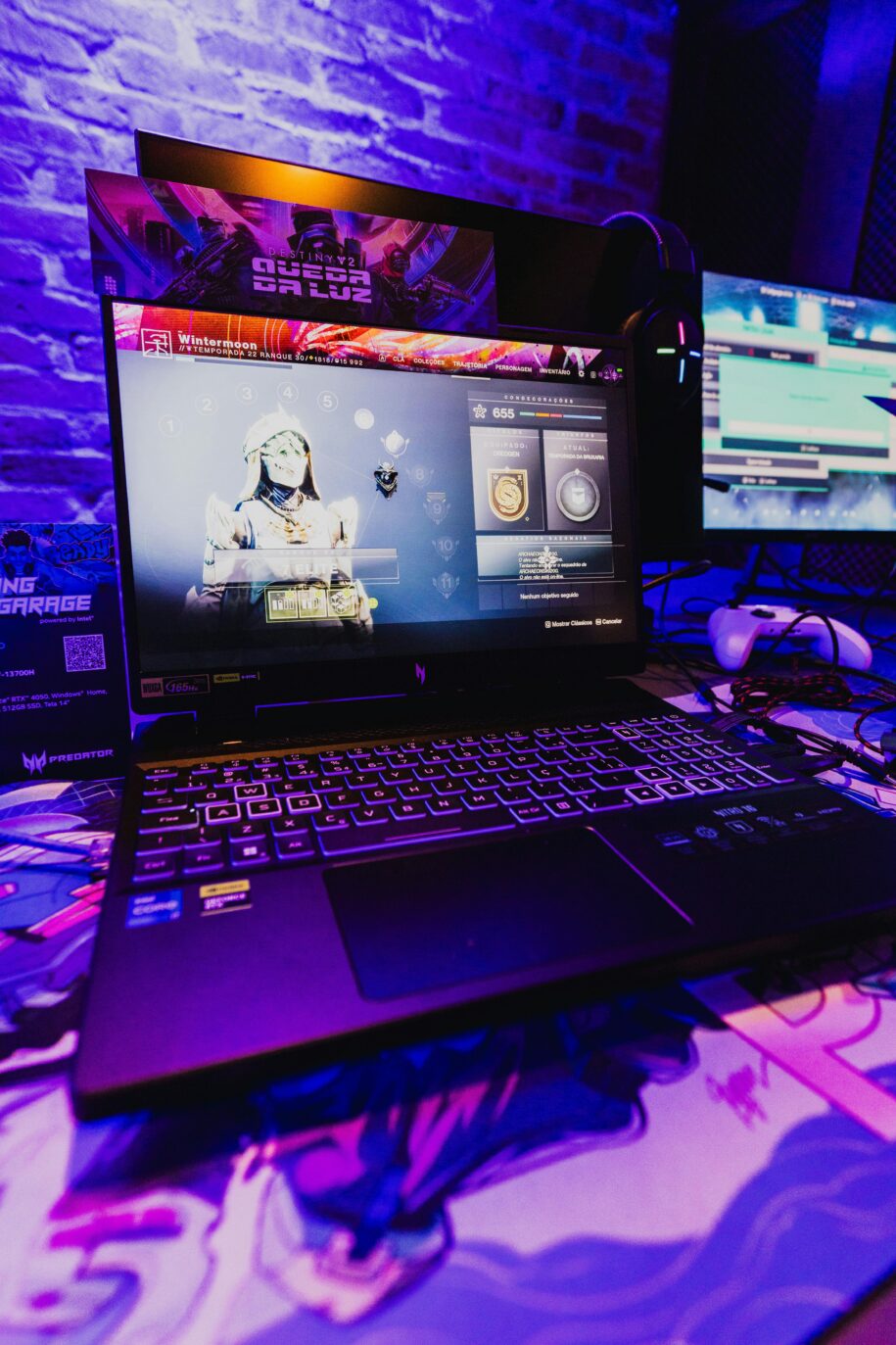If you’ve ever wondered about the power consumption of your gaming laptop, you’re not alone. Gaming laptops are power-hungry beasts, designed to deliver top-notch performance for intense gaming sessions. But exactly how many watts does a gaming laptop use? Let’s break it down in simple terms so you can understand what’s going on under the hood.
Quick Snapshot of Power Usage
Before we dive deeper, here’s a quick table summarizing the power consumption of different gaming laptop scenarios:
| Usage Scenario | Watts Consumed |
|---|---|
| Idle (No gaming, just browsing) | 30-50 W |
| Medium gaming settings | 100-150 W |
| High or Ultra settings | 150-250 W or more |
| Charging the battery | Additional 20-50 W |
Now, let’s explore why these numbers vary and what factors affect your gaming laptop’s power consumption.
Why Do Gaming Laptops Use More Power?
Gaming laptops are built for performance. Unlike regular laptops designed for web browsing or watching videos, gaming laptops house high-performance components like:
- Powerful GPUs (Graphics Processing Units): These are the heart of any gaming laptop, handling complex graphics and delivering smooth gameplay. GPUs like NVIDIA’s RTX series or AMD’s Radeon cards are powerful but energy-intensive.
- High-Performance CPUs (Central Processing Units): Gaming laptops often come with processors like Intel’s i7/i9 or AMD’s Ryzen series, which are optimized for speed and multitasking.
- High-Resolution Displays: Whether it’s a 1080p, 1440p, or 4K screen, gaming laptops often feature high-refresh-rate displays (120Hz, 144Hz, or even 240Hz), consuming more power than standard screens.
- Cooling Systems: Gaming generates heat, and laptops combat this with robust cooling solutions, including fans and sometimes liquid cooling, which also draw power.
When you combine these components, it’s no surprise that gaming laptops demand significantly more power than typical laptops.
Power Usage Scenarios
Let’s discuss how much power your gaming laptop might consume in different scenarios.
1. Idle or Light Use
If you’re just surfing the web, writing emails, or streaming videos, your laptop doesn’t need much power. It’s mostly using the CPU at low capacity, and the GPU is barely doing anything.
- Watts used: Around 30-50 W
- Why it’s low: The GPU and CPU are in power-saving modes, and your cooling system is running minimally.
2. Gaming on Medium Settings
When you fire up a game on medium settings, your laptop begins to flex its muscles. The GPU starts rendering detailed graphics, and the CPU processes game data.
- Watts used: 100-150 W
- Why it’s moderate: Your GPU and CPU are active but not maxed out. Cooling fans also start working harder.
3. Gaming on High or Ultra Settings
This is where the magic happens—and where the wattage spikes. High or ultra settings push your laptop to its limits to deliver the best visual experience and performance.
- Watts used: 150-250 W or more
- Why it’s high: Both GPU and CPU are running at full throttle. Fans are running at maximum speed to prevent overheating.
4. Charging While Gaming
If you’re gaming while charging your laptop, add another 20-50 W to the numbers above. That’s because the laptop is drawing power for both gaming and charging the battery simultaneously.
Factors That Affect Power Consumption
Not all gaming laptops use the same amount of power. Here are some factors that influence how many watts your laptop might use:
1. Hardware Specifications
A laptop with an RTX 4090 GPU will consume significantly more power than one with an RTX 3050. Similarly, CPUs with higher core counts or faster clock speeds also draw more power.
2. Display Settings
Running games on a 4K screen at 144Hz consumes more power than on a 1080p screen at 60Hz. Brightness levels also contribute to power usage.
3. Game Optimization
Some games are better optimized than others. A well-optimized game uses hardware more efficiently, consuming less power for similar performance.
4. Battery Health and Charging
Older batteries may require more power to charge, especially during heavy use. Efficient chargers can also impact overall wattage.
Tips to Optimize Power Usage
If you’re concerned about your electricity bill or want to extend your gaming sessions, here are some tips:
1. Adjust Graphics Settings
Playing on medium or high settings instead of ultra can save significant power without drastically affecting gameplay quality.
2. Use a Cooling Pad
A cooling pad helps keep temperatures down, reducing the need for fans to run at full speed.
3. Enable Power-Saving Modes
Most laptops have a “Battery Saver” or similar mode that throttles performance slightly to save power. Use this when gaming isn’t the primary focus.
4. Turn Down Brightness
Reducing screen brightness can lower power consumption, especially on larger or high-resolution displays.
5. Unplug When Not Gaming
If you’re not gaming, unplugging the laptop and running on battery can encourage the system to operate in power-efficient modes.
The Bigger Picture: Electricity Costs
You might be curious about how much gaming on a laptop costs in terms of electricity. Let’s do some quick math:
- Assume your gaming laptop uses 200 W on average.
- You game for 4 hours a day.
- That’s 200 W x 4 hours = 800 watt-hours or 0.8 kWh per day.
If electricity costs $0.15 per kWh in your area, you’re spending about $0.12 per day on gaming. Over a month, that’s roughly $3.60. Not bad for hours of entertainment, right?
Final Thoughts
Gaming laptops are undeniably power-hungry, but their efficiency has improved over the years. Knowing how many watts your laptop uses can help you make smarter choices about settings, usage, and even electricity budgeting.
Whether you’re a casual gamer or someone who spends hours in competitive matches, understanding your laptop’s power consumption can help you optimize your gaming experience without breaking the bank. So go ahead, game on—and power up wisely!










